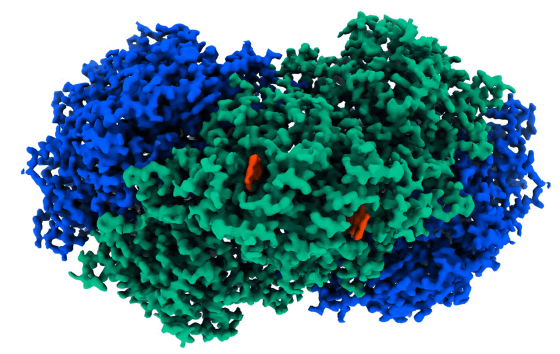Succeeded in separating an enzyme that can convert atmospheric hydrogen directly into electricity from bacteria, potentially leading to the realization of a small and sustainable power generator

Some bacteria living in the earth's soil decompose trace amounts of hydrogen contained in the air and extract electrons as energy when there are no other sources of nutrition. A research team led by Rhys Grinter, a biomedical researcher at
Structural basis for bacterial energy extraction from atmospheric hydrogen |
https://doi.org/10.1038/s41586-023-05781-7

Electricity from thin air: an enzyme from bacteria can extract energy from hydrogen in the atmosphere
https://theconversation.com/electricity-from-thin-air-an-enzyme-from-bacteria-can-extract-energy-from-hydrogen-in-the-atmosphere-200432
There are types of soil bacteria that can use hydrogen as an energy source, and surprisingly, bacteria remove 70 million tons of hydrogen from the air annually. Grinter et al.'s research team analyzed the genes of Mycobacterium smegmatis, a type of actinomycete , and conducted research to isolate hydrogenase , an enzyme that decomposes hydrogen and converts it into an energy source.
Hydrogen (hydrogen molecule) has two protons with a positive charge bound by two electrons, and the hydrogenase of smegmatis, which the research team named 'Huc', cuts this bond to create two Emit an electron by separating the protons of . Free electrons released by the decomposition of hydrogen flow into the electron transport chain of bacteria and are used to provide energy to cells. ``This means that Huc is converting hydrogen directly into electrical current,'' Grinter says, because current is created by the movement of free electrons.

However, the proportion of hydrogen in the atmosphere is only 0.00005%, and it was difficult with known catalysts to consume hydrogen that exists at such a low concentration. In addition, oxygen, which is abundant in the atmosphere, also interferes with the activity of many catalysts that consume hydrogen.
In order to investigate how Huc solves this problem, Grinter et al.'s research team first modified the gene of M. smegmatis, added a specific chemical sequence to Huc, and isolated Huc from M. smegmatis. I worked on the work to do. After several years of repeated experiments, the research team finally succeeded in isolating a high-quality Huc sample with stable activity in the range of -80 degrees Celsius to 80 degrees Celsius.
In an experiment using the isolated Huc, it was confirmed that the Huc can convert trace hydrogen contained in the atmosphere directly into electric current even when it is separated from smegmatis, and can supply power to an electric circuit. The research team said, ``In fact, Huc consumed a trace amount of hydrogen that could not be detected by a gas
The image below is a model of Huc's atomic structure that the research team identified by cryo-electron microscopy and spectroscopy .

by Rhys Grinter
The research team believes that Huc can act like a ``natural battery'' that continuously generates electric current from natural air or hydrogen fuel, leading to the development of small and sustainable air power generators as an alternative to solar power. claims to contain
A Huc-powered 'natural battery' might not produce much energy from hydrogen in the air, but could power biometric monitors, watches, LEDs, and simple computers. Also, if you supply artificially manufactured hydrogen fuel, it may be possible to supply power to a larger device. As another application, it is expected to be applied as an extremely high-precision biological hydrogen detection sensor by taking advantage of the characteristics of Huc, which can generate electric current from trace amounts of hydrogen contained in the atmosphere.
At the time of writing the article, it is still in the early stages of research, and for practical use, it is necessary to overcome several technical issues, such as scaling up the production scale of Huc from the current milligram unit to the kilogram unit. That's what I mean.
'In other words, this study shows that the fundamental discovery of how bacteria in soil feed themselves can lead to a rethinking of the chemistry of life,' the researchers said. It may lead to technological development for the future.'

Related Posts:







